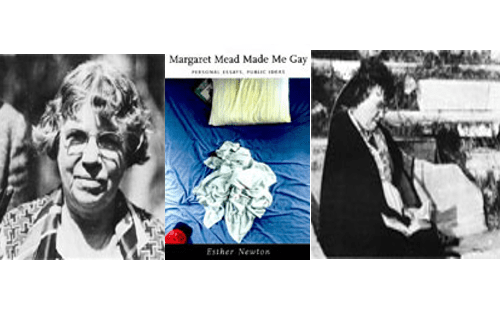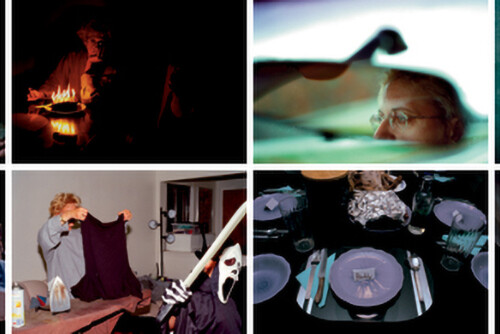The second is a clip from a film called The First Days in the Life of a New Guinea Baby. It is an extraordinary, 20-minute film in which one virtually witnesses the first few minutes after the birth of a baby in the Papuan highlands. Mead wasn’t actually present for the birth itself, but she got there within 20 minutes of the birth. It was shot in 1938 in an Iatmul village, where Bateson had done his first fieldwork. It was an extraordinary opportunity that she had been waiting for. The film camera was set up. She knew this woman was about to give birth. Within 20 minutes she was there with her camera, documenting what happened immediately after the birth. For Mead, Iatmul women became the ideal type of women, in terms of their childcare practices: the matter-of-fact way in which they took care of their babies and dealt with labor and childbirth. She contrasted the Iatmul ways to the highly medicalized routines in the U.S. at that time. I’m following the Film Board sequence with that little piece from the Iatmul work so you can see the kind of case she was using to set up a point of contrast to American practices at that time, which I think will be addressed this afternoon in other panels.
This second clip is from a much earlier work that, in a sense, became the basis for the kind of approach she later developed, that is so evident in the Canadian film.
This is Mead’s voice from the soundtrack explaining what you see.
FILM SOUNDTRACK (MEAD): “As the picture opens you see the mother wiping the newborn baby off with a piece of grass skirt. She severs the cord and puts the placenta in a coconut shell. She holds the baby up again, wipes it, tosses it in the air, tosses it sideways, and tosses it over on an old grass skirt, while the old woman attendants pour water over it.
“Here you see the mother sitting, waiting for a piece of European cloth to be brought — while the baby lies on the old grass skirt, on the ground, opening and shutting its hands, and crying, while the sunlight makes flecks on its body.
“The wet nurse has arrived; the wet nurse, who will later suckle the newborn. She flicks away the flies and protects the babies feet from the touch of scratchy sticks.
“More water is brought for the mother to bathe in, and she stands, only a very few minutes after the birth of the child, while cold water from the river is poured over her, as neighbor children watch. The wet nurse brushes the flies off the newborn child, and she nurses her own baby and smokes a cigar.
“The ‘cloth’ has been brought and –“
If it’s not this exact footage it is some other piece from the Iatmul that Mead was rumored to have shown to Dr. Spock before the delivery of Cathy, instructing him as to how she wanted Cathy to be delivered. I think the matter-of-factness and the notion of the mother as a healthy person was central to that.
I would like to make a couple of points to sum up. I think some of the key issues here are that Mead was really open to circulating her work in multiple arenas, and while she bore a cost of it, I think it’s in a way prescient to the contemporary world, in which we’re being encouraged constantly to get our work out to the public. Anybody who’s dealt with a publisher lately would know that. Margaret Mead was also attracted to film because of its capacity to outlive the analytic constraints of its time, due to its sensory appeal, its indexical qualities that link it to images and sounds of the world and its “excess,” i.e. the impossibility of containing its meaning. Whatever discursive framework is imposed on the material, the multiple tracks of its meaning – visual, auditory, musical, narrative, emotional – always exceed that effort at explanation. I think the second clip was a great example of that, where her scientific language is redundant to what you’re seeing, yet you’re seeing this extraordinary, beautiful moment, and the poetry is fighting with the science. And that’s a lot what Mead was about.
Indeed, she did more than recognize it. She and Bateson embraced these media and the practice of visual ethnography for the possibilities they offered for capturing what they called the ethos of a culture; those intangible aspects not easily translated into written language, what they called “the organization of the emotional life of a culture.” They also recognized its promise for future re-analysis of cultural worlds, documented and objectified in the empirical form of photography and film. These possibilities have been embraced by those who were subjects of many of those films.
Ironically, then, Mead anticipated (and, one might argue, even welcomed) critical reworkings of her own visual ethnography, because of the ways in which it might speak to future generations, approaching the material from different paradigms of knowledge, as, in fact, occurred with her Balinese material.




